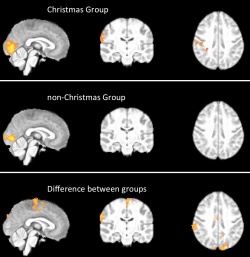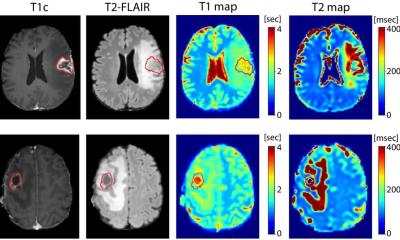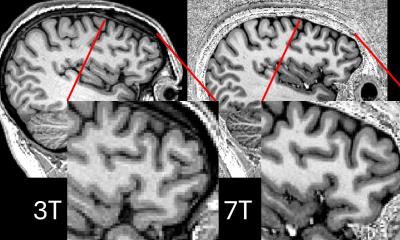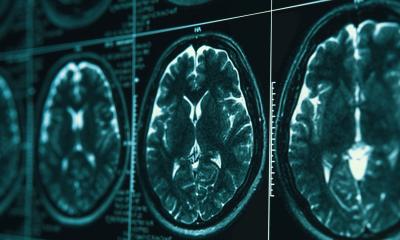fMRI
Scientists localise the Christmas spirit in the brain
Understanding how the Christmas spirit works could be a powerful tool in treating the "bah humbug" syndrome. The Christmas spirit has been located in the human brain, reveals a study published in The BMJ's Christmas issue.

The Christmas spirit has been a widespread phenomenon for centuries and is commonly described as feelings of joy and nostalgia mixed with associations to merry feelings, gifts, delightful smells, and good food. However, the authors of the study estimate that “millions of people are prone to displaying Christmas spirit deficiencies," and refer to this as the "bah humbug" syndrome. "Accurate localisation of the Christmas spirit is a paramount first step in being able to help this group of patients," they say, and can advance “understanding of the brain’s role in festive cultural traditions.”
So the team of researchers from Rigshospitalet, a hospital affiliated with Copenhagen University, attempted to locate the 'Christmas spirit' in the brain using functional magnetic resonance imaging (fMRI). An fMRI scan measures changes in blood oxygenation and flow that occur in response to neural activity, and can produce activation maps showing which parts of the brain are involved in a particular mental process.
The study involved 10 participants who celebrated Christmas, and 10 healthy participants who lived in the same area, but who had no Christmas traditions.All participants were healthy, and did not consume eggnog or gingerbread before the scans. Each participant was scanned while they viewed 84 images with video goggles. Images were displayed for two seconds each, and after six consecutive images with a Christmas theme, there were six every day images.
After the scans, all participants filled out a questionnaire about their Christmas traditions, feelings associated with Christmas, and ethnicity. Based on these results, 10 participants were allocated to the “Christmas group” – those who celebrated Christmas and had positive associations – and 10 to the “non-Christmas group” – those who did not celebrate Christmas and had neutral feelings towards the festivities.
Differences in the brain activation maps from the scans of the two groups were analysed to identify Christmas specific brain activation. Results showed five areas where the Christmas group responded to Christmas images with a higher activation than the non-Christmas group. These included the left primary motor and premotor cortex, right inferior and superior parietal lobule, and bilateral primary somatosensory cortex.
These cerebral areas have been associated with spirituality, somatic senses, and recognition of facial emotion among many other functions. For example, the left and right parietal lobules have been shown to play a role in self transcendence, the personality trait regarding predisposition to spirituality. In addition, the frontal premotor cortex is important for experiencing emotions shared with others by mirroring or copying their body state, and premotor cortical mirror neurons even respond to observation of ingestive mouth actions.
Further research is necessary to understand the Christmas spirit, and other potential holiday circuits in the brain, say the authors, such as Easter, Chanukah, Eid, and Diwali. "Although merry and intriguing, these findings should be interpreted with caution," they explain. “Something as magical and complex as the Christmas spirit cannot be fully explained by, or limited to, the mapped brain activity alone.”
Source: BMJ
22.12.2015











